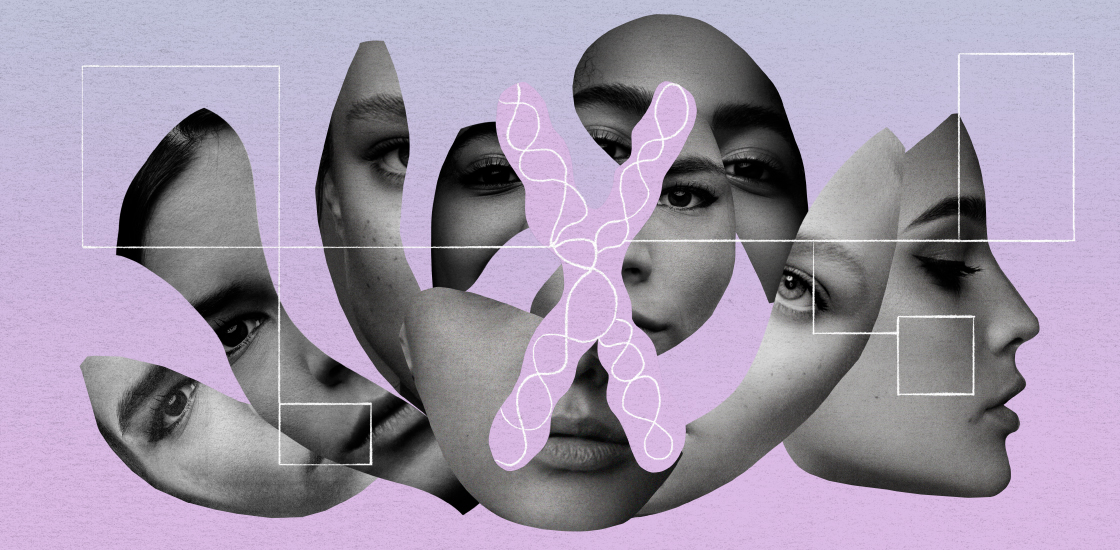Autism’s genetic drivers may differ by sex
Autism may stem from a different — and larger — set of genetic mutations in women than it does in men.

Autism may stem from a different — and larger — set of genetic mutations in women than it does in men, according to a new study1.
The findings support a growing body of evidence suggesting that women require a bigger genetic hit than men do to have conditions that affect brain development, including autism.
Autism affects about four men for every one woman, according to a comprehensive analysis from 2017. The cause of this sex bias is an “outstanding question in the field,” says Tychele Turner, assistant professor of genetics at Washington University in St. Louis, Missouri, who led the new work.
Researchers used to have to pool men and women to amass the sample sizes needed to identify genes that may contribute to a condition. But today they have access to tens of thousands of genetic samples — enough to look at each sex independently, Turner says.
“We thought: Now that all that data exists, could we go back and begin to ask questions about the difference in males and females?” she says.
Turner’s team linked 22 genes to conditions of brain development in a sample of women versus 18 genes in twice as many men.
The findings support the idea that women can sustain a larger genetic hit than men without having autism, a phenomenon called the ‘female protective effect,’ says Donna Werling, assistant professor of genetics at the University of Wisconsin-Madison, who was not involved in the work. But the mechanisms that might protect women are a mystery.
Investigating how autism genes differ by sex will be key to understanding the mechanisms “for either female protection or male risk or vulnerability,” Werling says.
Gender divide:
Turner’s team used genetic data from denovo-db, a database that contains information on people who have brain developmental conditions and carry de novo variants — those not inherited from parents. These conditions are linked to genes that have a high burden of de novo mutations2.
The researchers combed the genomes of 2,133 women and girls, and 4,641 men and boys for genes with more de novo mutations than would be expected to occur by chance. They found 17 such genes exclusively in females, 18 exclusively in males and 19 in both sexes.
They searched for these 54 mutations in 18,778 genomes — including 8,399 from girls and women — taken from a database called GeneDx. This analysis whittled down the number of genes tied to these conditions to 7 in females, 3 in males and 15 in both groups.
The 15 genes that affect both sexes tend to be expressed in neurons, whereas the 10 that preferentially affect one sex are expressed across distinct cell types in the cerebral cortex. Turner declines to speculate about this difference, saying only that it is “interesting.”
Of the 25 genes overall, 22 are involved in many of the same pathways — for instance, those that govern how DNA gets transcribed into RNA — which suggests that they regulate other genes. The study was published in November in The American Journal of Human Genetics.
Five of the seven genes found in women are on the X chromosome; all five have previously been identified in people with conditions of brain development. The new work shores up these clinical observations, Turner says.
“I think at this point you can say those are really solid genes involved in neurodevelopmental disorders,” she says.
One of the five X-chromosome genes, DDX3X, is thought to account for intellectual disability in at least 1 percent of all women and girls with that condition3.
X factor:
It is unsurprising that the mutations that appear on the X chromosome preferentially affect women, Turner says; women carry two copies of the X chromosome, whereas men carry just one. But autism research rarely focuses on the sex chromosomes; because of the condition’s sex bias, most research has been done in men.
The study “provides some motivation for the field to take a closer look at X-chromosome genes,” Werling says.
Other experts praised the work for beginning to tease apart the sex bias. “By combining some very large data resources and doing a bit of trickery, they’ve been able to compile enough power to start elucidating these things, and that’s very exciting,” says Jakob Grove, associate professor of biomedicine at Aarhus University in Denmark, who was not involved in the study.
However, the databases the researchers used include people only with de novo mutations. To determine the burden of mutations in this group, the team had to estimate how many men and women in the studies the databases drew from have neurodevelopmental conditions that didn’t stem from de novo mutations. Ideally, Grove says, this estimate would have been pulled from original data.
“The authors here have been very careful,” he says. “But it would be nice to see this done … where the researchers have full access to the raw data.”
The researchers also used a mathematical model to estimate the baseline rate of de novo mutations in the general population too, Werling says, allowing the researchers to flag genes with an unusually high number of mutations in people with brain developmental conditions. Again, it would be better to get these rates from real data on de novo mutations in neurotypical controls, she says.
In addition, de novo mutations are thought to account for only 10 percent of autism cases. Turner says the team plans to investigate whether the sex disparity they uncovered in de novo mutations exists for inherited genetic variants, too.
References:
Recommended reading

INSAR takes ‘intentional break’ from annual summer webinar series

Dosage of X or Y chromosome relates to distinct outcomes; and more
Explore more from The Transmitter
Xiao-Jing Wang outlines the future of theoretical neuroscience

Memory study sparks debate over statistical methods

